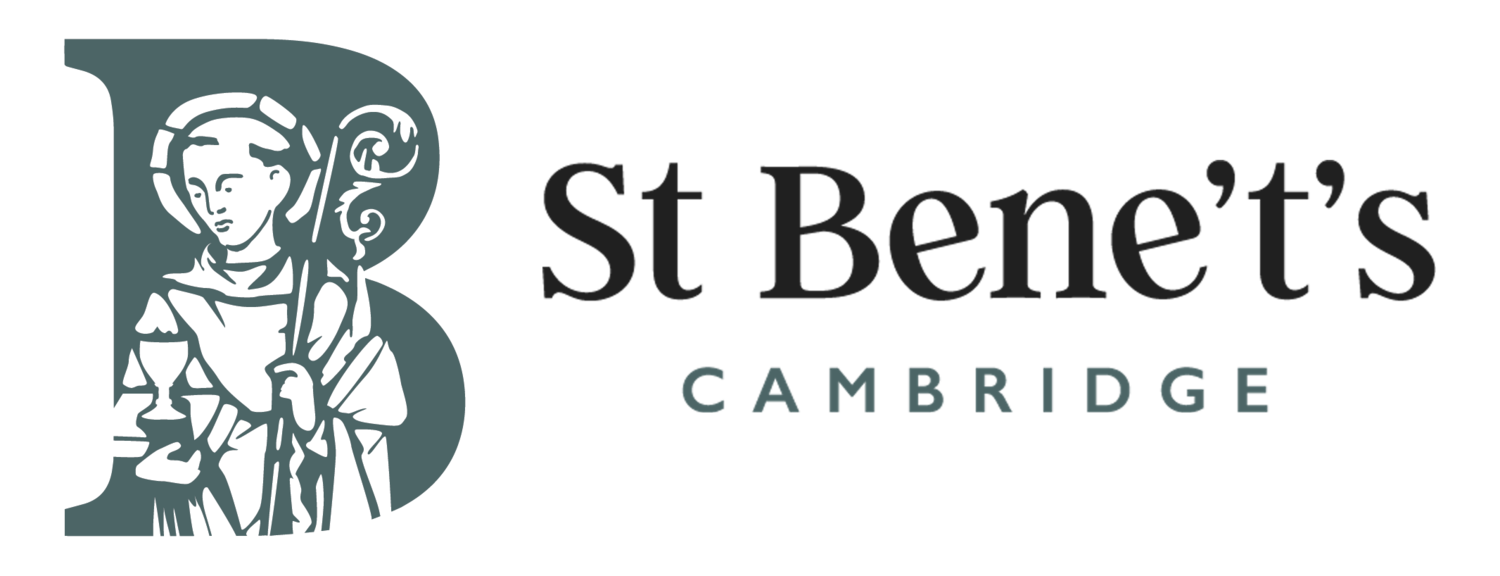St John the Evangelist
Sermon preached by the Revd Anna Matthews
Despite the familiarity of the nativity, the well-loved carols, the cribs that decorate churches and homes throughout the world, all of which owe their inspiration to the gospels of Matthew and Luke, John is the evangelist whose feast day falls closest to Christmas, and the soaring beauty of his prologue has just as much a place in the Christmas canon as the shepherds and the wise men. In the beginning was the Word… and the Word became flesh, and dwelt among us, full of grace and truth.
Luke begins his account of the nativity in the time of the Roman Empire, when Caesar Augustus had called a census, and while Quirinius was governor of Syria. John begins in the time before there was time, with the love of the eternal, triune God, which overflows first into creation, and then in the sending of the Son.
In Jesus, heaven comes down to earth. The eternal Son of the Father, the second person of the holy and eternal Trinity, takes on human flesh, is born as one of us, so that we might know God.
Before, we knew God through the scriptures, through creation, through the stories of his people, through the prophets. Now, we know him in his Son. The Son is the revelation of the Father, the image of the invisible God.
John’s Gospel tells us that in Jesus, we see God made visible. ‘No one has ever seen God’, his prologue goes on. ‘It is God the only Son, who is close to the Father’s heart, who has made him known.’
So why, on this feast day that falls so close to Christmas, do we get an Easter gospel? Today’s reading comes right at the end of John’s Gospel. Jesus is risen from the dead; he has appeared to the disciples on the the shore of Lake Tiberias, has eaten fish for breakfast, and forgiven Peter.
Then we hear mention of this elusive beloved disciple. ‘What about him?’ asks Peter. What about him? We’re reminded by John that we’ve met this disciple before: he’s the one ‘who had reclined next to Jesus at the supper’ – that final, fateful supper before Jesus was handed over to be crucified, that supper we remember in this and every Eucharist.
Only, when we hear the actual account of the Last Supper in John’s Gospel, the language is slightly different. Not ‘reclined next to Jesus’, but ‘reclining on Jesus’ bosom’. So what, you might think: it’s just a slight difference in wording. Except that St John uses the exact same wording for the place of the beloved disciple as he does for the place of Jesus with the Father in the prologue. In the Greek of John 1, Jesus is ‘the one being in the bosom of the Father’. In the Greek of John 13, it is the beloved disciple who is ‘the one being in the bosom of Jesus’.
From beginning to end, this is the good news John’s Gospel proclaims: Jesus brings us to the place he shares with the Father. As we draw close to Jesus – and it is a picture of great intimacy – so we are drawn close to the Father’s heart. The Word became flesh and dwelt among us, so that he might bring us to dwell with him.
And again, in our translation we can miss some of the resonances. The Word became flesh and tabernacled among us, is what the text actually says. It’s the word used to describe God’s dwelling place with his people in the temple, and before that, in the ark of the covenant, as we heard in the Old Testament reading. Moses goes into the tent, and the pillar of cloud descends, and the Lord speaks with Moses, ‘face to face, as one speaks to a friend’.
This is the intimacy, the friendship, for which God created us. Through the gift of his Son, through God pitching his tent right in our midst, in human flesh, this presence and friendship is open to us all. No longer do we have to stand far off while another goes in and intercedes or offers sacrifice on our behalf. In Jesus, God comes to dwell with all of us to draw us into the relationship for which he made us.
The picture of the beloved disciple, his head resting on Jesus’ chest, close to Jesus’ heart, is a picture of the Christian life. The beloved disciple shows us the path of all discipleship: to be attuned to the heartbeat of Jesus, and to abide secure in his love, until we come to the place he has prepared for us, close to the Father’s heart.
It is this same beloved disciple, in John’s Gospel, who will remain at the cross, keeping vigil with Mary, as Jesus’ heart is pierced with a spear and water and blood issue forth – life giving streams of the new covenant in baptism and Eucharist. Here is Christ giving himself to the world in love. This is where God is willing to go to bring us back to him.
Here we are faced with divine love, and ourselves as objects of it. Here, with the beloved disciple, we learn again that life is gift: that through the open heart of Christ, through the streams of living water that flow from it, God is raising us up with Christ and drawing us to him. As someone who is often happier feeling useful to God than being loved by him, this is something that stops me in my tracks.
So come, draw close to Jesus: in the crib, on the cross, in the Sacrament. With John, let Jesus draw you into his friendship, share with you his heart, and learn that his coming is to make of you, and of me, beloved disciples.
